Tessalation!
|
I am sitting at Archive in Salem with my bestie, the poet Stephanie Lenox, for our now annual goal-setting meeting. Goal-setting is literally my favorite thing to do. I ADORE goals. Goals are like birds in eggs, waiting to hatch! But I'm always careful about what I put at the top of my list because as we all know, what gets put at the bottom does not happen. Over a killer latte, with a stream of good-looking 20-somethings wafting through the door, I wrote this list of goals for Tessalation!, my children's book on tessellations. I divided my goals into three sections: Production, Budget and Marketing. Here I am with Stephanie at Archive, caffeinating and planning for world domination in 2016! PRODUCTION Goals1. Finalize the text.. I keep waffling a bit on the words in my book and I really just need to decide that it's done. 2. Coordinate with brother-in-law Jeff. I've hired him to make the images consistent in terms of saturation, palette and size and he is also helping me choose typeface and positioning for the words. 3. Explore publishing options. Whew. That's a big one. I've already begun the process, and will write about that in a later post, but for now, thank freakin' God, it's just a line item in my to-do list. BUDGET GoalsDecide how much I am actually willing to spend to get this baby out in the world. My only budget items so far are my illustrator's fees, which have been a little over $400. I need to seriously considering where my cap is here. MARKETING GoalsThis might actually take up the bulk of my time with regard to this book, since so much of the production will occur on someone else's watch. 1. Brainstorm blog posts for 8 weeks (I actually did that this morning and ended up with blog post ideas through May of 2016. Blogging! Not so hard, actually. And fun! 2. Blog for an aggregator site like Hubspot -- I've done this with other projects and seen a lot of traffic come in, so it's worth a try 3. Brainstorm and connect with organizations that would appreciate the message of my book. I've got a lot of ideas here: Mother's Groups, Women in Math, Puzzle People, you know, the whole gamut. I'll write a blog post about how to do this. 4. Find my helpers. No books are born on their own, so I'd love to find some fans that would be willing to post about the project 5. Create a How to Make a Tessellation tutorial for YouTube. My brother-in-law Jeff might be a good resource here. 6. Finalize a marketing plan. On it! 7. Decide on a platform. Where am I going to publish this? Amazon? Createspace? Lulu? Where? 8. Make a Book Trailer. Actually, my friend, the amazing Wendy Dale is already on this! 9. Launch this book! These aren't all the steps I'll need to take to get my book out into the world, but I've covered the basic categories I'll be exploring on this blog in 2016! Are you writing a children's book or do you plan to in 2016? What are your goals? Have I missed anything? Please link to your project!
1 Comment
Last November, I finally bit the bullet and decided to hire someone to illustrate my children's picture book. In this blog post, I'm going to share with you how I did it and some of the questions I encountered in the process. The traditional model Generally, in traditional children's book publishing, the author submits the text and, unless he/she is an illustrator herself/himself, the publishers pick the illustrator. I think this is a great model for the marketplace, but it's not for me. Basically, it boils down to time and control, two issues I struggle with always. Some advantages of DIY:
Some disadvantages:
Finding an illustrator on Fiverr I've been working with several designers on Fiverr for a while now. In the past, I've had flyers made there, and book covers for other projects. These were simple projects, more cut-and-dried. They didn't require a ton of interpretation on the part of the designer, and graphics can easily be tweaked in the process. It has been fun, easy, and fast. Hiring an illustrator on Fiverr, or any other site, is completely different. I knew I wanted someone who would be able to translate the spirit of my book and develop my character, Tessa. I knew I wanted Tessa to look Asian, since she is half-Asian, so I went looking for an illustrator who would be able to illustrate a little girl, perhaps 6-7 years old, half-Asian. I was also interested in having the images illustrated in watercolor. And I needed someone who could interpret and create the tesselations, or interlocking patterns, in the book. Step 1: Go to Fiverr.com and Search for "children's book illustration" Your search result will look something like this. As you can see from the results, the quality of illustration on Fiverr is wildly disparate. Illustrators work in many media and styles, and you could easily get overwhelmed just clicking through all of the options. Step 2: Click on "High Rating" Because this is Fiverr, where designers are not vetted, you will be more successful if you work with someone who has a track record of delivering. Look for the 5-star designers by clicking on "High Rating." This should cut the number of options down and ensure you a better experience. Step 3: Edit your options Just by looking at the thumbnails of the illustrator's work you should be able to tell which illustrators you are drawn to. You've written your book, so you have the best understanding of its spirit and what you want it to feel like. Find about half a dozen illustrators who you are interested in learning more about. You can add these designers to your "favorites" by clicking on the little heart in the bottom left of the thumbnail image. Step 4: Explore each individual profile Now that you have half a dozen choices, you should go into the illustrators' pages themselves (just click on the gig image) and explore what project they have done in the past. For my book, I started looking at the work of the illustrator called "Taiga Bluet," on her Fiverr page. It wasn't long before I had quickly determined that this was my illustrator. She had a lovely lightness to her work that I felt fit well with the spirit of childhood, she worked in watercolor, and her characters had a vaguely Manga feel to them, so they looked Asian. To my great delight, her English and other communication are fantastic (she later let me know that I'd be communicating with her sister, who does her project management).. Step 5: Order a sample image To be clear, I didn't take this step, though if I hadn't lucked out so much with my illustrator (she's awesome!), it might have been a problem. Ask your chosen illustrator to do a sample of your character. Each gig can be ordered with a series of extras. You'll always want to pay for commercial use of the image, and you want to make sure you cover all of your legal bases if you're putting this in a publication. For my project, I would have ordered a single page with a single character with commercial use, which would have been about $25. Give the designer as much information as possible about the character before they start! Step 6: Work with the illustrator If you are happy with your sample, great! If not, you'll have to give the illustrator feedback on the sample. Hopefully your illustrator is fast, polite, and speaks/writes great English. If not, you might have to move on to another option. In my case, I was thrilled from the get-go with my illustrator's work, so I knew I had landed well. Step 7: Create a custom order If you're happy with the character, contact the illustrator and have them create a custom order for you. My book requires 16 illustrations, so my illustrator came up with a custom order of $25/page. We started with 8 pages so that she knew I was happy with the work before proceeding. You'll have to specify what size you want the images to be based on the trim size of your book. In my case, that was 8 x 11.5 in., or a landscape picture book. You'll also have to let your illustrator know whether they need to leave room for the text/how much room to include. This can be very difficult to change after a design has been made, so plan ahead! You'll need to create a document called Illustration Notes which has both the text of your book and any elements you absolutely want illustrated. This is very important, so take your time! Step 8: Relish the images as they come in Be sure to give your illustrator feedback on the work. For my book, it was important the illustrator be able to render the tesselations (patterns) in the book, so we worked a little more closely on developing those. I sent her images of what I expected or might work for the tesselations. Otherwise, I let her interpret the story herself. Part of the fun for me in this project was seeing what the illustrator would come up with. If you are hiring a true artist, they will add to your story with visual interpretation. Watching my illustrations come in was, no exaggerating, a highlight of my life! Step 9: Thank your illustrator I think it's good practice to tweet out or post images on Facebook when you have received your images. It always feels good to give back, and doing so can increase interest in your book before it is even out there. In my case, my FB friends were so excited by the images that they actually started pre-ordering the book! Step 10: Adjust your images This is where I am now. I have all 16 of my images and my illustrator friend Jeff Diesburg will be adjusting them for contrast, clarity and color. He will also be adding in the text for me. I could probably hire someone on Fiverr to do this, but I trust Jeff, he's family, and he's brilliant. About the Tessalation! illustrator: Illustrator Maima Widya Adiputri has been in love with drawing since before she can remember. She is a member of the illustration studio Reeham Visual Courier and is working on a comic magazine called Fairyframe. She lives in Indonesia, where she is studying watercolor and arabesque, a pattern-making technique involving arithmetic. You can see more of her work here and here. Have you hired illustrators on Fiverr.com or another site? What's been your experience?Tesselations bring order to a confusing world A tesselation is nothing more than a pattern of interlocking shapes, with no spaces in between them. They are one of life's great visual mysteries -- a way that the world orders itself, not just in a myriad of man-made creations, but also the natural world. As part of my children's book-making journey, I wanted to explore the ways some tesselations can be found in nature. So I've started putting together a learning page on tesselations where you can explore some images of tesselations, both natural and man-made. But tesselations also feel deeply personal to me. My affection for them goes a lot farther than just seeing them as something cool to look at. A history of pattern-making I made my first tesselation in a fourth grade gifted class. To be honest, it wasn't that great. It was a series of interlocking images of a seal poking its head in and out of the waves. I was trying to recreate it the other day. It looked something like this. It doesn't look like much by itself. Maybe some kind of pacifist Chinese star that wouldn't stick in anything you threw it at. But when you tesselate it out -- put the pattern next to each other in a repeated pattern, it becomes something else: A sea of seals. Ok, this might not win any tesselation awards. But! Even in this rudimentary form, you can see what kind of fun tesselations can provide. They create groups out of individuals, they allow you to see single things or objects or shapes as part of a fascinating whole, an unending series of individuality becoming a collective force. Visually, they never stop engaging. In other words, tesselations can help you feel a visual peace in a world that often provides chaos. They are calming, in the way that all patterns are calming. Tesselations in my book Tessalalation! I had several goals in writing my children's book Tessalation! For one, I wanted to capture the feeling of what it was like to first discover that thrill of interlocking patterns. The first words of my book are a testament to that: "Tiny Tessa Truman-Ling finds patterns in the strangest things!" In the first pages of my book, Tessa is at home with her mother, where she is surrounded by patterns -- in the curtains, on the tables. Her home is filled with patterns. But I also wanted to make the connection between patterns in man-made environments and patterns out in nature. So I sent Tessa outside, where she becomes enveloped in the patterns of nature and finds herself a place in those patterns. My hope is that small readers will find several entry points into the book -- through the words, yes, but also in the images, where they can look for Tessa and imagine how they might also fit as a piece in a whole. After all, isn't that what we all yearn to be? A piece of a whole, our individuality intact? If you'd like to follow along on this book's journey to publication, please sign up for my email newsletter at the top right of this page :)
Sometimes, creative projects start out as these little birds chirping at you from the nest. You can feed them and watch them grow, or you can fly away and leave them to die (awwww...) until the next season. But sometimes, you feed it just a little, and before you know, it's taking wings and seemingly flying on its own without any help whatsoever. So it was with Tessalation!, the picture book that I've been putting together the last couple of weeks. I set out to write the text for Tessalation! in the spring of 2014. I wanted to create something new – a book about falling in love with tessellations, which are nothing more (or less!) than interlocking patterns with no spaces in between them. Tesselations are awesome. You can find them in nature, or you can make them yourself. Industrial producers use them to get the maximum value out of the materials they use. Quilters use them to create stunning works of art that boggle the mind but somehow settle it at the same time. I knew this book would be no Chicka Chicka Boom Boom in terms of its language. So I took my inspiration from my all-time favorite picture book, Margaret Mahy’s book Bubble Trouble, which has one of the most complicated but rhythmically satisfying rhyming sequences in the children’s literature. I started reading Bubble Trouble to my son when he was just 2 years old, discovering that you can envelop a child in a rhythmic world even if the vocabulary is logically like a stretch for them. At the same time, I thought about how fun it would be to build a story based on the principles of hide-and-seek. Seriously. It's a game that never gets old, I don't care if you're 3 or 93. Over a period of weeks, I developed my story and my character, Tessa. I know several wonderful little girls named Tessa, but my inspiration behind my character is my niece, Piper, 2, who is half Chinese-American and half Caucasian-American. I wanted Piper to grow up with a book character that looked just like her. But Tessa also reminds me of who I was as a young girl – dreamy, lost in contemplation, not so good at listening to the adults in her life. She’s a good girl, but she doesn’t like being interrupted when she’s creating! At the start of the book, Tessa is making pie with her mother in the kitchen. But this little girl can be a lot to handle, so her mom sends her outside to play for a while. Tessa is drawn immediately to the things in the garden that she can see in pattern -- bees, leaves, fish, mushrooms, flowers. In her mind, she is Tessalating in the patterns. That's the basic project. There will be more, of course. Lots more. Infinite tiles of more. My plan is to share some of the questions I encountered as I made this book on this blog in the spirit of helping other people take their own little birds and watch them fly! Stay tuned... You can become a piece of the Tessalation! puzzle by joining our list in the right of this page.
|
AuthorEmily Grosvenor, author of Tessalation!, a children's book about tesselations and patterns in nature. Archives
October 2022
Categories |
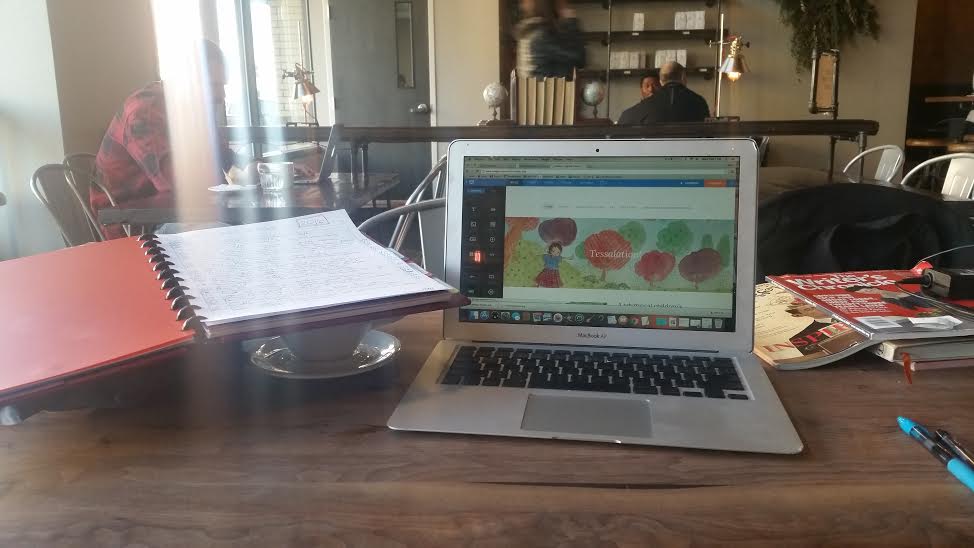



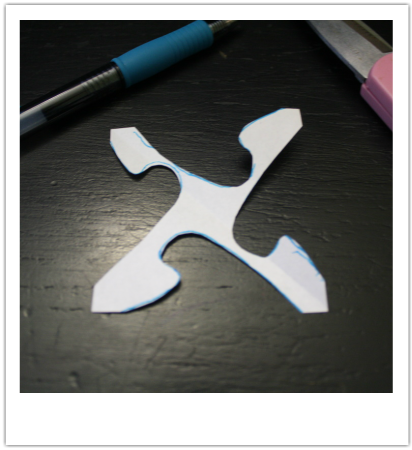
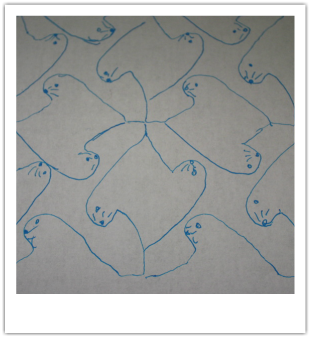

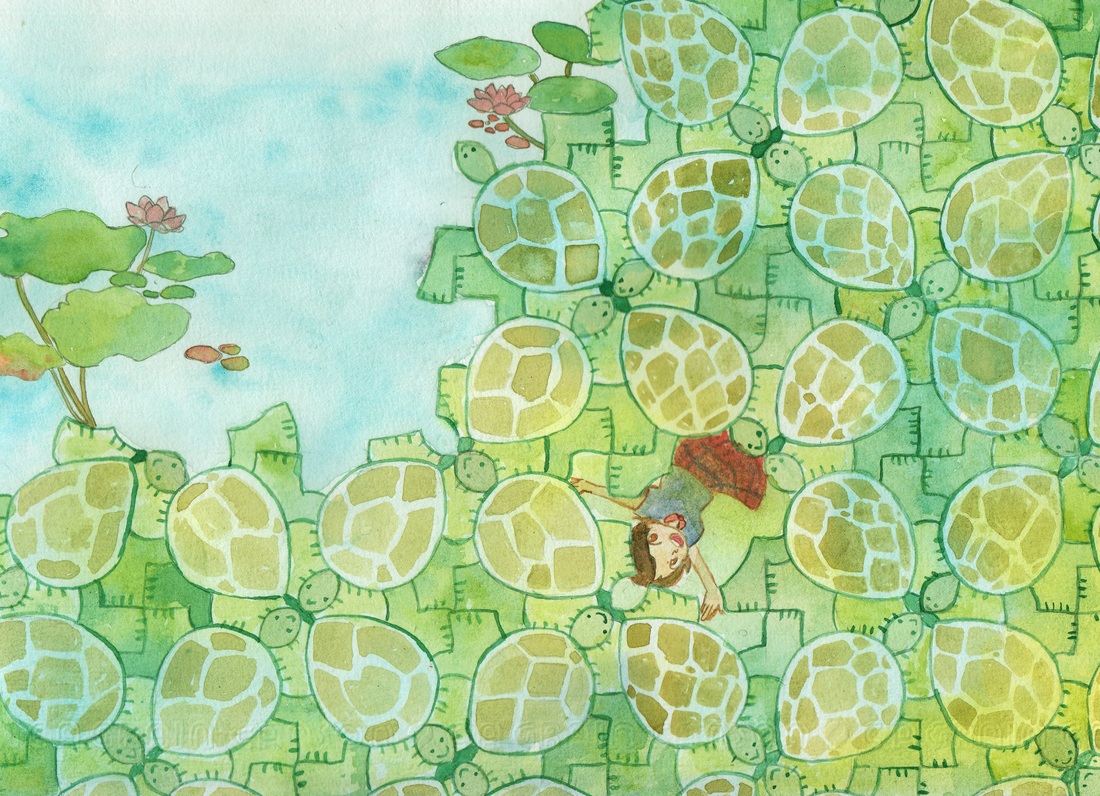
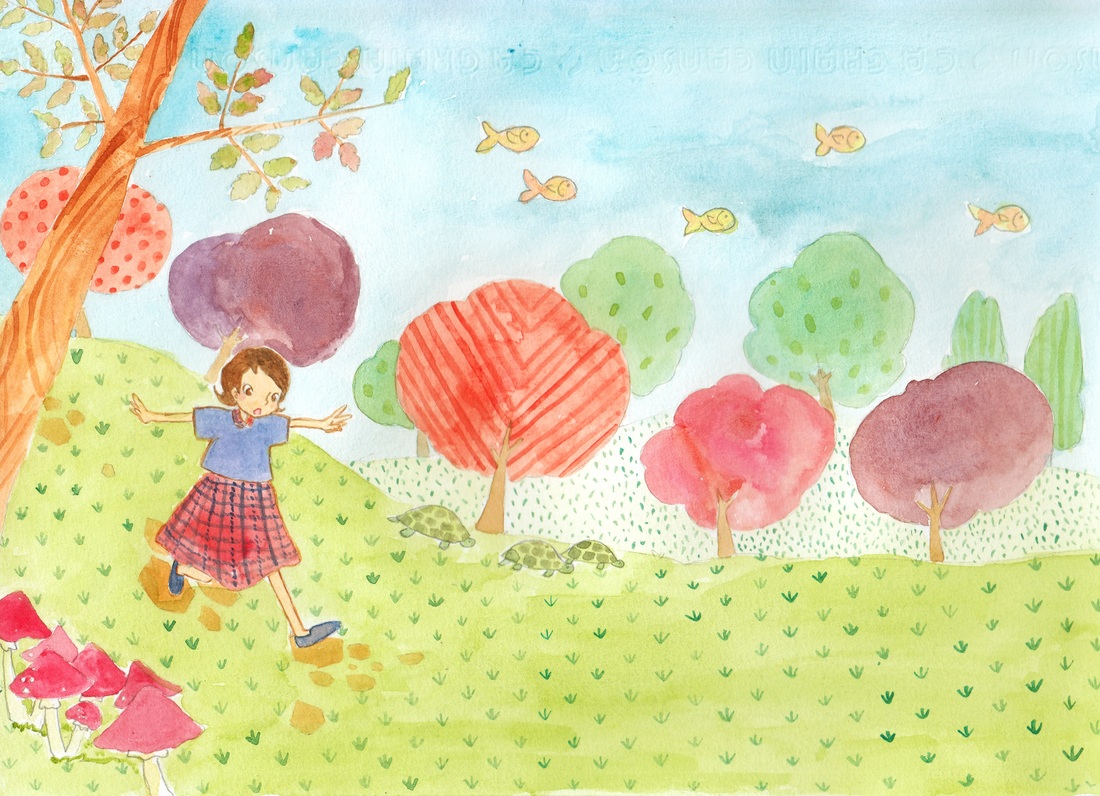
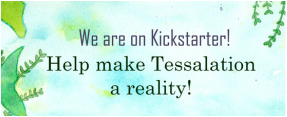
 RSS Feed
RSS Feed
